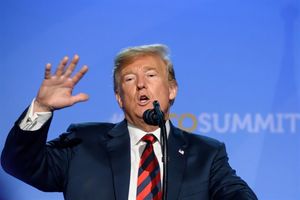Description: With stalled regulation, delayed economic data, and rising investor uncertainty, traders are turning to Bitcoin (BTC), Shiba Inu (SHIB), and Dogecoin (DOGE) to navigate the storm.
The U.S. government shutdown has effectively frozen parts of the economy. Key data releases, including inflation and employment reports, have been delayed, leaving investors without the usual macro indicators that shape market decisions.
Traditional markets are jittery, and risk sentiment is fluctuating.
Crypto, however, operates on a different wavelength. With no central authority controlling supply, digital assets tend to react to broader liquidity shifts rather than government output directly.
Still, the shutdown has indirect effects, from tightening capital flows to stirring uncertainty about long-term U.S. fiscal stability.
Bitcoin price steadies amid uncertainty
The Bitcoin price has held firm through the early stages of the shutdown, reaching an all-time high of over $125,000 and currently trending to a cooldown of $121,409. Bitcoin remains the market’s benchmark and is often viewed as “digital gold.”
In moments when confidence in traditional governance wanes, BTC value tends to rise as investors seek refuge in decentralized assets.
The price of Bitcoin also reflects sentiment toward risk and regulation. With economic data delayed, investors are turning to macro proxies such as the dollar index and Treasury yields to gauge direction. Bitcoin’s ability to remain stable amid policy gridlock reinforces its appeal as a global hedge against political uncertainty.
Shiba Inu and Dogecoin: sentiment over substance
While Bitcoin projects strength, meme coins like Shiba Inu (SHIB) and Dogecoin (DOGE) are riding emotional waves. The SHIB price and DOGE price have seen moderate swings as retail traders debate whether to treat them as speculative assets or community-driven safe havens.
Shiba Inu token value has held up thanks to Shibarium, its Layer-2 network that adds real-world functionality beyond memes. Meanwhile, the Dogecoin price movement reflects DOGE’s enduring brand recognition and social relevance, especially as traders lean on community sentiment during uncertain times.
Both Shiba coin and DOGE token rely heavily on engagement rather than fundamentals, but their strong online communities keep them active players even as larger institutions sit on the sidelines.
Regulation stalls, innovation slows
The shutdown has also put crypto regulation on pause. With the SEC, CFTC, and Treasury departments operating with limited capacity, major filings like ETF reviews and policy guidance are effectively frozen. This delay affects confidence and slows the pace of institutional adoption.
For Bitcoin, reduced regulatory pressure may be a temporary reprieve. For altcoins like SHIB and DOGE, however, clarity is crucial. Investors and exchanges alike rely on defined frameworks to expand listings, integrations, and long-term use cases. Until the government resumes normal operations, uncertainty will continue to cloud the path forward.
Speculation or safe haven?
Investors are split between viewing crypto as a shelter or a gamble. Bitcoin price movements suggest growing acceptance of BTC as a store of value when political trust declines. In contrast, SHIB price movements and DOGE price trends reveal that meme coins still trade largely on speculative enthusiasm.
For now, Bitcoin seems to be the preferred hedge, while Shiba Inu and Dogecoin capture the retail crowd’s optimism and volatility. Yet the longer the shutdown lasts, the more all three assets benefit from the narrative of decentralization and financial independence.
Final thoughts
The U.S. government shutdown underscores both crypto’s independence and its ongoing ties to macro sentiment. Bitcoin price charts show steady resilience, Shiba Inu token remains a force in community-driven innovation, and Dogecoin coin price continues to symbolize the cultural side of crypto trading.
For Toobit traders, this is a test of perspective. Watching the Bitcoin price, SHIB price, and DOGE price provides a window into how different corners of the market respond to the same political storm; one through trust, and two through community.






